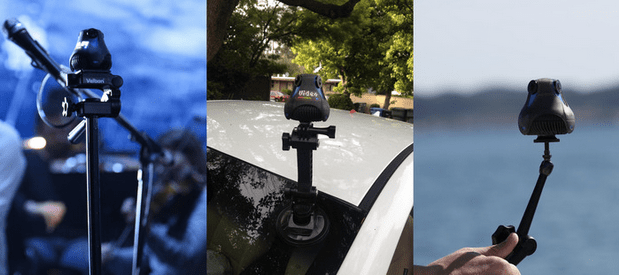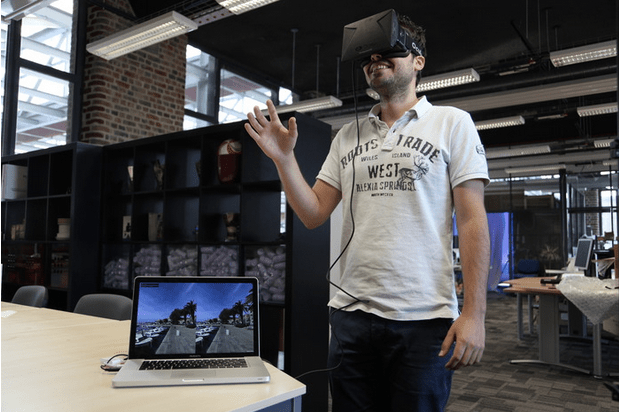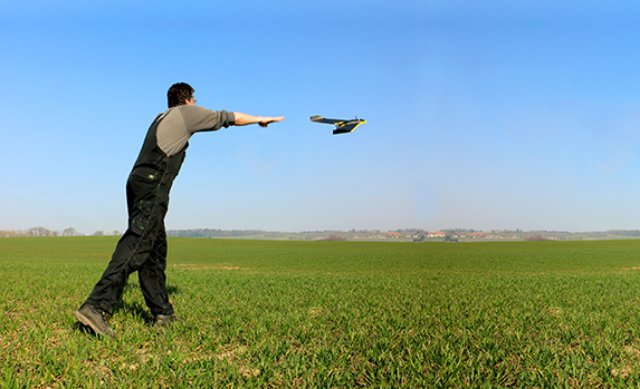The nascent market for 360-degree cameras is getting more crowded. Meet
Giroptic, which joins the likes of
Bublcam,
Centr Cam and
Panono in building hardware to capture a more fuller picture of what’s going on around you.
Giroptic is currently running a
Kickstarter campaign to raise money to put its prototype egg-shaped 360-degree cam into production and has smashed past its original goal of $150,000 — with more than $610,000 raised at the time of writing and still a full 36 days left on its campaign.
How does Giroptic differ from rival 360-degree cams? It’s offering 360 HD video (1080p “equivalent image quality”) — including real-time streaming — which sets it apart from Panono, which only does photos at present.
Giroptic also stitches the images it captures together inside the device itself to make a real-time panorama. The actual captured portion is 150 degrees from top to bottom out of a possible 180-degrees, so it’s not getting everything — typically there’s a blind spot beneath the device, as if a football had had its base sliced off.
This is because Giroptic has three 185-degree fish-eye lenses mounted near the top. Bublcam bests this viewing field with a true spherical 360-degree view (with zero blind spots), thanks to four 190-degree lenses, but it does not do the stitching on the device itself.
And then Centr Cam takes a smaller slice still — offering a 56-degree vertical field of view vs 150 degrees on Giroptic – so it’s capturing a lot less.
(Some examples of 360 footage captured with Giroptic can be viewed
here.)
All that might sound like splitting hairs, and in many ways it is. But with multiple players scrambling to build into a new and novel space those hair-splitting tech decisions are likely to make the difference between success and failure.
Giroptic’s egg-shaped offering is certainly enjoying some early success, with the French team behind it smashing past their original Kickstarter goal, as noted above.
“The additional funds raised will help us improve the camera resolution & bring more additional functions to the device,” CEO Richard Ollier told TechCrunch. “It is already loaded with GPS, WiFi, Gyroscope, 3 microphones, but we see many opportunities in our backers comments & suggestions.”
The team has a background in 360 imagery, having spent six years developing 360 cameras for real estate and forensic use-cases.
“We created over the years a team of high level engineers (optic / electronic / firmware / mechanic) who focused on 360 imaging,” said Ollier. “We managed to get our 360 video stitching technology fit into an egg sized device and decided then to bring it to the masses.”
One neat feature Giroptic’s team have come up with is a lightbulb mounting so the camera can easily be installed in a room when you’re away as a home video surveillance system. The device then draws power from the lightbulb socket, and uses the on-board Wi-Fi to stream imagery to your phone/home network.
They’ve also made Giroptic waterproof (IPX8 rated) — and offer a pair of cute lens goggles as an accessory to improve underwater optics.
Various leisure and travel use-cases (especially) are envisaged for 360-degree cams. But perhaps the most topically interesting are the possibilities for immersive viewing when captured panorama content is combined with a VR headset such as Oculus Rift.
Giroptic is also offering its own 360-degree player software for viewing on more traditional devices including Macs, PCs, smartphones and tablets.
As well as 360 video, the device can also be used to capture regular footage from a single lens and snap still photos. It can also be controlled via a smartphone so you can snap a group shot remotely.
What about price then? All the very early bird pledges for Giroptic have been snapped up, so the lowest current price for Giroptic is $329. Which is certainly not cheap for a camera. But it’s considerably cheaper — less than half the price — than Bublcam.
It’s also not that much more expensive than Centr Cam, yet looks more fully featured. The team is aiming to ship to backers in November, which also bests the shipping schedule of Centr Cam. So if you’re in the market for this type of 360cam kit Giroptic may well hit the sweet spot.




 AT&T and Samsung today announced the Galaxy S5 Active, a ruggedized variant of Samsung's flagship smartphone. The GS5 Active carries over many of the GS5's key specs, including the 5.1-inch FHD screen, 2.5GHz quad-core processor, 16-megapixel camera, and built-in heart rate monitor with S Health software. The GS5 Active has, however, been wrapped in a tougher exterior to provide extra protection from the elements. The GS5 Active meets mil-spec 810G, which means it can withstand high heat, extreme cold, shock, vibration, high altitude, and humidity. The GS5 Active can also sit in up to 3 feet of water for up to 30 minutes. Samsung added one neat software trick to the GS5 Active: a press of the convenience key on the side will launch all the apps related to outdoor activity on a single screen. The Samsung Galaxy S5 Active costs $200 with a new two-year contract, $27.50 per month on AT&T Next 18, or $35.75 per month on AT&T Next 12. It can be ordered online and in stores beginning today.
AT&T and Samsung today announced the Galaxy S5 Active, a ruggedized variant of Samsung's flagship smartphone. The GS5 Active carries over many of the GS5's key specs, including the 5.1-inch FHD screen, 2.5GHz quad-core processor, 16-megapixel camera, and built-in heart rate monitor with S Health software. The GS5 Active has, however, been wrapped in a tougher exterior to provide extra protection from the elements. The GS5 Active meets mil-spec 810G, which means it can withstand high heat, extreme cold, shock, vibration, high altitude, and humidity. The GS5 Active can also sit in up to 3 feet of water for up to 30 minutes. Samsung added one neat software trick to the GS5 Active: a press of the convenience key on the side will launch all the apps related to outdoor activity on a single screen. The Samsung Galaxy S5 Active costs $200 with a new two-year contract, $27.50 per month on AT&T Next 18, or $35.75 per month on AT&T Next 12. It can be ordered online and in stores beginning today.
